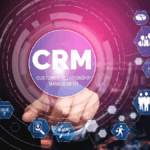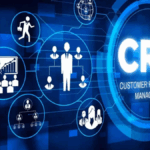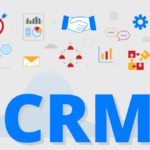Customer Relationship Management (CRM) systems have transformed the way businesses interact with their customers. Whether you’re a startup or an enterprise, mastering a CRM system can be the key to streamlined operations, improved sales, and enhanced customer satisfaction. In this comprehensive guide, we’ll explore everything you need to know about CRM systems — what they are, why they matter, how to choose the right one, and how to maximize their value.
What is a CRM System?
Definition and Purpose
A Customer Relationship Management (CRM) system is software designed to manage a company’s interactions with current and potential customers. It helps store customer data, track sales leads, manage marketing, facilitate communication, and improve service delivery.
Why CRM Matters
CRM centralizes customer information, enabling better service, personalized experiences, and efficient sales and marketing. It enhances internal collaboration and ultimately boosts customer retention and profitability.
Key Features of CRM Systems
Contact Management
CRMs allow businesses to store and manage contact details — names, addresses, social media profiles, purchase history, and more — in one place.
Sales Automation
From tracking leads to forecasting sales, CRMs automate sales processes to improve productivity and close more deals.
Marketing Automation
CRMs often include tools for email campaigns, audience segmentation, and customer journey tracking to support marketing efforts.
Customer Support
Ticketing systems, live chat, and knowledge bases can be integrated into CRMs to streamline customer service.
Analytics and Reporting
Dashboards and reports provide actionable insights into customer behavior, campaign performance, and sales trends.
Integration Capabilities
A good CRM integrates with email, calendars, social media, accounting software, and other business tools.
Types of CRM Systems
Operational CRM
Focuses on automating customer-facing operations like sales, marketing, and service.
Analytical CRM
Provides tools for data analysis, customer segmentation, and trend forecasting to support decision-making.
Collaborative CRM
Facilitates communication across departments and with external stakeholders for improved service and customer satisfaction.
Benefits of Using a CRM System
Improved Customer Relationships
Centralized data allows teams to deliver consistent and personalized customer experiences.
Increased Sales and Revenue
Automated workflows, better lead management, and opportunity tracking improve conversion rates.
Enhanced Productivity
Automation reduces manual tasks, freeing time for strategic activities.
Better Data Management
Accurate, up-to-date information improves forecasting and business planning.
Scalable Customer Service
As your business grows, CRMs help maintain high-quality service by managing larger volumes efficiently.
How to Choose the Right CRM System
Assess Your Business Needs
Identify your goals — sales growth, improved customer service, marketing automation — to choose a CRM that aligns with your strategy.
Consider Usability
The system should be user-friendly and intuitive to ensure team adoption.
Look for Customization
Choose a CRM that allows customization based on your industry or specific business processes.
Evaluate Integration Options
Ensure compatibility with your current tools and platforms like email, ERP, or e-commerce.
Scalability
Pick a system that can grow with your business and handle increased data or users over time.
Budget and ROI
Weigh the cost against the potential benefits and improvements in efficiency or revenue.
Steps to Successfully Implement a CRM System
1. Define Objectives
Clarify what you want to achieve — better lead management, faster response times, higher conversion rates, etc.
2. Involve Stakeholders
Involve departments like sales, marketing, and customer service to ensure the CRM fits cross-functional needs.
3. Choose the Right Vendor
Compare features, pricing, support, and customer reviews to select a CRM provider.
4. Data Migration
Plan and execute a clean migration of your existing customer data to avoid errors or duplicates.
5. Training and Onboarding
Ensure employees are trained adequately to use the system effectively.
6. Monitor and Optimize
Continuously evaluate the system’s performance and make adjustments as needed.
Common Challenges in CRM Implementation
Poor User Adoption
Even the best CRM fails without employee buy-in. Solve this with proper training and communication.
Data Quality Issues
Outdated, incomplete, or incorrect data can reduce CRM effectiveness.
Over-Complex Systems
A system with too many features may overwhelm users. Customize dashboards and limit access to necessary tools.
Integration Problems
Incompatibility with existing tools or systems can hinder CRM performance.
CRM Best Practices for Maximum ROI
Keep Data Clean and Updated
Regularly update contact information, delete duplicates, and verify customer records.
Automate Repetitive Tasks
Use workflow automation for follow-ups, emails, and task reminders to save time.
Personalize Customer Interactions
Use customer data to tailor emails, offers, and support.
Analyze Performance
Use CRM analytics to assess sales, marketing, and support efforts and refine strategies accordingly.
Encourage Cross-Department Collaboration
Ensure all departments use and contribute to the CRM for a unified view of customer interactions.
Trends Shaping the Future of CRM
Artificial Intelligence (AI)
AI-powered CRMs offer predictive analytics, chatbots, and intelligent automation to improve efficiency.
Mobile CRM
Remote access and mobile-first CRM platforms enable teams to work from anywhere.
Social CRM
Integration with social media platforms helps businesses track mentions, respond in real time, and improve brand engagement.
Voice and Conversational Interfaces
Voice commands and chat-based UIs are becoming more common, streamlining CRM usage.
Industry-Specific CRMs
Tailored solutions for industries like healthcare, real estate, or finance offer better functionality for niche needs.
Case Study: CRM in Action
Scenario: Retail Business
A mid-sized e-commerce company implemented a CRM to streamline marketing and support. Within 6 months, email engagement improved by 40%, abandoned cart recovery increased revenue by 15%, and customer complaints dropped by 25% due to quicker ticket resolution.
Key Takeaways
- Automated workflows helped reduce manual efforts.
- Segmented campaigns targeted specific demographics effectively.
- Integration with the website and payment gateway created a seamless customer experience.
How CRM Impacts Different Departments
Sales
Tracks leads, manages pipelines, sets reminders, and closes deals faster.
Marketing
Creates targeted campaigns, automates email marketing, and tracks ROI in real time.
Customer Support
Manages tickets, monitors customer satisfaction, and ensures timely resolution.
Management
Provides comprehensive dashboards for performance tracking, forecasting, and strategic decisions.
CRM for Small vs. Large Businesses
Small Businesses
Look for cost-effective, easy-to-use systems with core features like contact management and automation.
Large Enterprises
Need scalable CRMs with advanced analytics, AI features, role-based access, and multi-channel integrations.
Top CRM Platforms in the Market
(Note: No endorsement, just for informative purposes)
- Salesforce
- HubSpot
- Zoho CRM
- Microsoft Dynamics
- Freshsales
- Pipedrive
- Insightly
Each of these platforms offers unique strengths, and the right one depends on your budget, business model, and goals.
Conclusion
Mastering CRM systems is more than just purchasing software — it’s about aligning people, processes, and technology to build stronger customer relationships. Whether you’re looking to streamline operations, improve sales outcomes, or provide excellent customer service, a well-implemented CRM system can be your greatest asset. Start with clear goals, choose the right platform, train your team, and continuously optimize your strategy. In today’s competitive landscape, a CRM isn’t just a tool — it’s a necessity.
FAQs
1. What does a CRM system actually do?
A CRM system manages customer data, automates sales and marketing tasks, tracks customer interactions, and improves customer service and engagement.
2. Is CRM only for large companies?
No, CRM systems can benefit businesses of all sizes. Small businesses can use lightweight solutions tailored to their scale and budget.
3. How long does CRM implementation take?
Depending on the complexity and size of the business, implementation can take anywhere from a few weeks to several months.
4. Can a CRM system integrate with my existing tools?
Most modern CRMs support integration with tools like email platforms, calendars, e-commerce platforms, and accounting software.
5. How can I ensure employees use the CRM system?
Provide training, choose a user-friendly CRM, set expectations clearly, and highlight the personal benefits (like saving time or achieving targets).
CRM systems, customer relationship management, sales automation, marketing automation, CRM software, CRM benefits, CRM features, CRM implementation, CRM best practices, business tools, sales CRM, marketing CRM, CRM integration, customer service CRM, small business CRM, enterprise CRM, CRM trends, AI in CRM, mobile CRM, CRM for business growth











